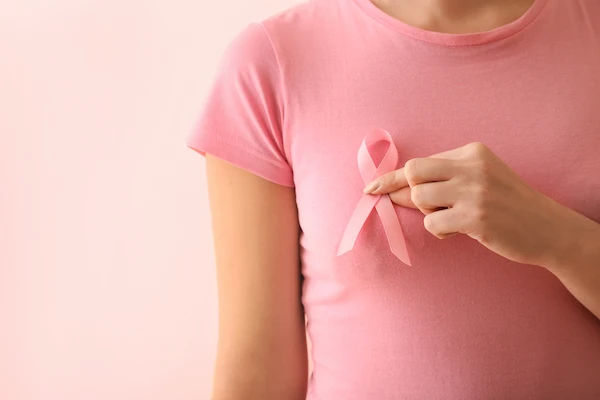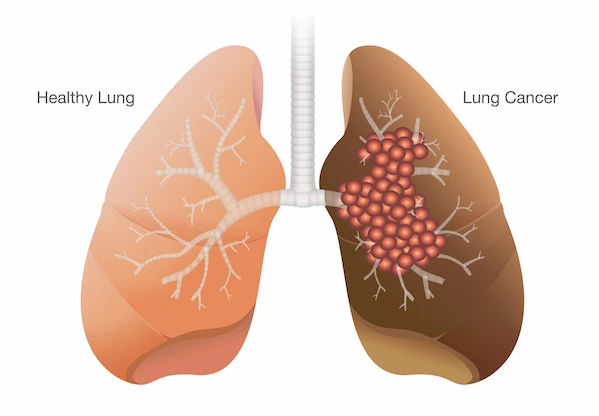Know the Signs: A Guide to the Most Common Cancers in Women
Learn the key warning signs, symptoms, risk factors, and screening recommendations for the most common cancers in women, and how early detection can save lives.

Written by Dr. J T Hema Pratima
Reviewed by Dr. Dhankecha Mayank Dineshbhai MBBS
Last updated on 29th Sep, 2025
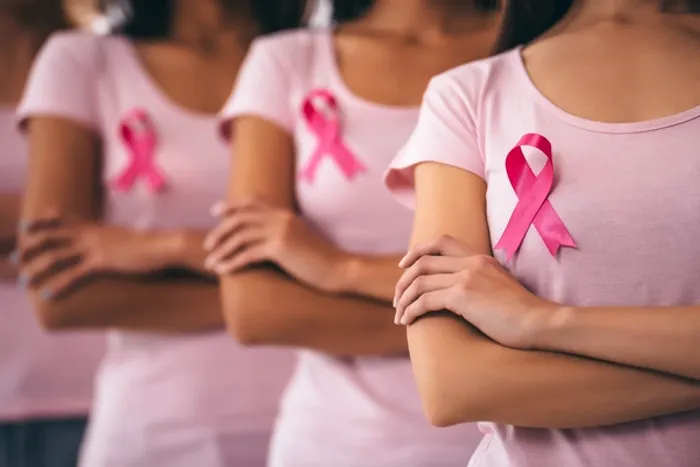
Introduction
When it comes to our health, knowledge is more than power—it’s a form of protection. For women, understanding the specific health risks we face, including the signs of the most common cancers, is a critical step toward well-being. This article is designed to be your comprehensive guide. We will walk you through the key symptoms, risk factors, and screening recommendations for the cancers that most frequently affect women. Our goal is not to alarm you, but to arm you with clear, actionable information. Early detection dramatically improves treatment outcomes and survival rates for nearly all types of cancer. By learning what to look for and when to take action, you become an active participant in your own healthcare journey. Remember, noticing a change in your body is the first step; discussing it with a healthcare professional is the most important next one. Let’s dive into understanding these conditions, so you can feel confident and informed.
1. Breast Cancer: The Most Prevalent Cancer in Women
Breast cancer is the most commonly diagnosed cancer among women worldwide. While the statistics can seem daunting, advancements in treatment have made it highly treatable, especially when caught early. Awareness of your body and regular screening are your best defences.
Key Warning Signs and Symptoms of Breast Cancer
The classic sign is a new lump or mass in the breast or armpit. However, symptoms can be more subtle. Be on the lookout for:
- A change in the size, shape, or appearance of the breast.
- Dimpling, puckering, or redness of the breast skin, resembling an orange peel (peau d'orange).
- Nipple changes, such as inversion, scaling, or spontaneous discharge that is not breast milk.
- Persistent pain in any area of the breast.
- It's crucial to remember that many breast lumps are benign (non-cancerous), but any new or unusual change warrants a doctor's evaluation.
Understanding Your Risk and Screening Options
Risk factors include being female, increasing age, family history, certain genetic mutations (like BRCA1 and BRCA2), and dense breast tissue. However, most women who develop breast cancer have no known family history.
Screening is key. A mammogram (an X-ray of the breast) can often detect a lump before it can be felt. Guidelines vary, but many organisations recommend starting annual or biennial mammograms at age 40 or 50. If you have a higher risk, your doctor may recommend starting earlier or using additional imaging like an MRI. If you notice any persistent changes, consult a doctor online with Apollo24|7 for further evaluation and to discuss a screening plan.
2. Lung Cancer: Leading Cause of Cancer Deaths
Lung cancer is the leading cause of cancer deaths for both men and women, largely because it is often diagnosed at a later stage. Recognising the early signs of lung cancer is challenging but vital.
Early Signs of Lung Cancer Women Should Not Ignore
Symptoms often don't appear until the disease is advanced. When they do, they may include:
- A persistent or worsening cough that doesn't go away.
- Coughing up blood or rust-coloured phlegm.
- Chest pain that is often worse with deep breathing, coughing, or laughing.
- Hoarseness, shortness of breath, and frequent respiratory infections like bronchitis or pneumonia.
- Unexplained weight loss and loss of appetite.
Risk Factors Beyond Smoking
While smoking is the top risk factor, it's a myth that only smokers get lung cancer. Exposure to second-hand smoke, radon gas, asbestos, and other carcinogens can also increase risk. Notably, rates of lung cancer among women who have never smoked are higher than among men who have never smoked, for reasons that are still being studied.
Consult a Oncologist for the best advice
3. Colorectal Cancer: A Preventable Threat
Colorectal cancer (cancer of the colon or rectum) is the third most common cancer in women. It often begins as a small, non-cancerous polyp, which gives a critical window for prevention through screening.
Symptoms of Colorectal Cancer in Women
Signs can be subtle and easily mistaken for other conditions. Pay attention to:
- A persistent change in your bowel habits, such as diarrhoea, constipation, or narrowing of the stool.
- Rectal bleeding or blood in your stool (which may appear dark brown or black).
- Persistent abdominal discomfort, such as cramps, gas, or pain.
- A feeling that your bowel doesn't empty completely.
- Unexplained weakness, fatigue, and weight loss.
The Critical Role of Colonoscopy Screening
A colonoscopy is the gold standard for screening because it can both detect and remove precancerous polyps during the same procedure. Screening is generally recommended starting at age 45 for average-risk individuals. If your condition does not improve after trying dietary changes for digestive issues, it's essential to rule out serious causes. Booking a physical visit to a doctor with Apollo24|7 can help you determine if a referral for a colonoscopy is needed.
4. Cervical Cancer: Often Linked to HPV
Cervical cancer is almost exclusively caused by persistent infection with high-risk strains of the Human Papillomavirus (HPV). This makes it one of the most preventable cancers.
Recognising the Signs of Cervical Cancer
Early-stage cervical cancer often has no symptoms. As it advances, warning signs may include:
- Abnormal vaginal bleeding, such as after sex, between periods, or after menopause.
- Unusual vaginal discharge that may be watery, pink, or foul-smelling.
- Pelvic pain or pain during intercourse.
Prevention through HPV Vaccination and Pap Smears
The HPV vaccine can prevent infection from the most dangerous strains of the virus. The Pap test (or smear) can detect precancerous changes in the cervix, allowing for treatment before cancer develops. HPV tests can detect the virus itself. Following your doctor's recommended schedule for these tests is the single most important thing you can do to prevent cervical cancer.
5. Uterine (Endometrial) Cancer: A Cancer of the Womb
Uterine cancer, specifically cancer of the endometrium (the lining of the uterus), is the most common gynaecologic cancer in women.
The Most Common Symptom: Abnormal Vaginal Bleeding
The hallmark symptom is abnormal vaginal bleeding. For premenopausal women, this means unusually heavy periods, bleeding between periods, or prolonged periods. For postmenopausal women, any vaginal bleeding or spotting is a major red flag and should be evaluated immediately by a doctor.
Risk Factors and When to See a Doctor
Risk factors include obesity, hormonal imbalances, never having given birth, and starting menstruation early or menopause late. Tamoxifen (a breast cancer drug) and a family history of Lynch syndrome also increase risk. Because abnormal bleeding is such a clear signal, uterine cancer is often detected early. If you experience any abnormal bleeding, consult a doctor online with Apollo24|7 to discuss your symptoms.
6. Skin Cancer (Melanoma): Watch Your Skin
While skin cancer is common, melanoma is the most dangerous form. It can appear anywhere on the body, even in areas not exposed to the sun.
The ABCDEs of Melanoma Detection
Use the ABCDE rule to check your moles and spots:
- Asymmetry: One half of the mole doesn’t match the other.
- Border: The edges are irregular, ragged, or blurred.
- Colour: The colour is not uniform and may include shades of brown, black, pink, white, or blue.
- Diameter: The spot is larger than 6mm (about the size of a pencil eraser), although melanomas can be smaller.
- Evolving: The mole is changing in size, shape, or colour.
Any new, changing, or unusual skin growth should be examined by a dermatologist.
General Signs and Symptoms Common to Many Cancers
In addition to site-specific symptoms, be aware of general signs that can be associated with many cancers. These include:
- Unexplained weight loss of 10 pounds or more.
- Persistent, unexplained fever or night sweats.
- Extreme fatigue that doesn’t get better with rest.
- Persistent pain without a known cause.
- Skin changes, such as yellowing (jaundice), darkening, or new hair growth.
While these symptoms are most often caused by something other than cancer, if they are persistent or severe, they should not be ignored.
The Power of Prevention and Early Detection
While not all cancers can be prevented, a healthy lifestyle can significantly reduce your risk. This includes maintaining a healthy weight, eating a diet rich in fruits and vegetables, staying physically active, avoiding tobacco, limiting alcohol, and protecting your skin from the sun. The most powerful tool, however, is early detection through recommended screenings. These tests are designed to find cancer before symptoms even appear, when it is most treatable.
Conclusion: Your Health is in Your Hands
Understanding the signs of the most common cancers in women is an essential part of taking control of your health. This knowledge empowers you to have informed conversations with your doctor and to advocate for yourself. Remember, you are the expert on your own body. While this information is a guide, it is not a substitute for professional medical advice. If any symptom causes you concern, the best course of action is always to seek expert evaluation. Your health is your most valuable asset—protect it with awareness and proactive care.
Consult a Oncologist for the best advice
Consult a Oncologist for the best advice

Dr Sunita Samleti
Oncologist
18 Years • M.D. (Pathology)- TN Medical College, Mumbai University, Mumbai, Mar 2005 M.B.B.S. Grant Medical College, Mumbai University, Mumbai, Oct 1999
Chinagadila
Apollo Hospitals Health City Unit, Chinagadila

Dr. Sanchayan Mandal
Medical Oncologist
17 Years • MBBS, DNB Raditherapy, DrNB Medical Oncology
East Midnapore
VIVEKANANDA SEBA SADAN, East Midnapore

Dr.sanchayan Mandal
Medical Oncologist
17 Years • MBBS, DrNB( MEDICAL ONCOLOGY), DNB (RADIOTHERAPY),ECMO. PDCR. ASCO
Kolkata
Dr. Sanchayan Mandal Oncology Clinic, Kolkata
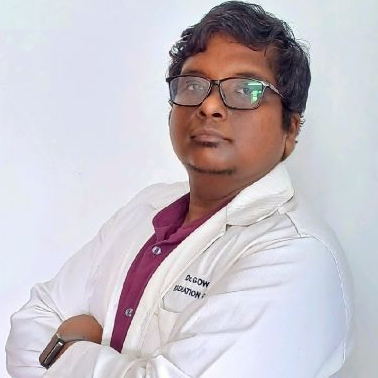
Dr Gowshikk Rajkumar
Oncologist
10 Years • MBBS, DMRT, DNB in Radiation oncology
Bengaluru
Apollo Clinic, JP nagar, Bengaluru
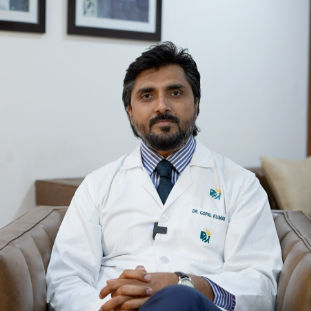
Dr. Gopal Kumar
Head, Neck and Thyroid Cancer Surgeon
15 Years • MBBS, MS , FARHNS ( Seoul, South Korea ), FGOLF ( MSKCC, New York )
Delhi
Apollo Hospitals Indraprastha, Delhi
(25+ Patients)
Consult a Oncologist for the best advice

Dr Sunita Samleti
Oncologist
18 Years • M.D. (Pathology)- TN Medical College, Mumbai University, Mumbai, Mar 2005 M.B.B.S. Grant Medical College, Mumbai University, Mumbai, Oct 1999
Chinagadila
Apollo Hospitals Health City Unit, Chinagadila

Dr. Sanchayan Mandal
Medical Oncologist
17 Years • MBBS, DNB Raditherapy, DrNB Medical Oncology
East Midnapore
VIVEKANANDA SEBA SADAN, East Midnapore

Dr.sanchayan Mandal
Medical Oncologist
17 Years • MBBS, DrNB( MEDICAL ONCOLOGY), DNB (RADIOTHERAPY),ECMO. PDCR. ASCO
Kolkata
Dr. Sanchayan Mandal Oncology Clinic, Kolkata

Dr Gowshikk Rajkumar
Oncologist
10 Years • MBBS, DMRT, DNB in Radiation oncology
Bengaluru
Apollo Clinic, JP nagar, Bengaluru

Dr. Gopal Kumar
Head, Neck and Thyroid Cancer Surgeon
15 Years • MBBS, MS , FARHNS ( Seoul, South Korea ), FGOLF ( MSKCC, New York )
Delhi
Apollo Hospitals Indraprastha, Delhi
(25+ Patients)
More articles from Breast Cancer
Frequently Asked Questions
What are the most subtle early signs of ovarian cancer?
Ovarian cancer is often called a 'silent killer' because symptoms can be vague and easily attributed to other conditions. Key subtle signs include persistent bloating, feeling full quickly when eating, pelvic or abdominal pain, and urgent or frequent urination. If these symptoms are new and occur almost daily for more than a few weeks, it's important to see a doctor.
I have a family history of cancer. What should I do?
Inform your primary care physician about your specific family history. They can assess your personal risk and may recommend starting screenings at an earlier age, more frequent screenings, or genetic counselling and testing to see if you have inherited gene mutations that increase your cancer risk.
How often should I perform a breast self-exam?
While formal monthly self-exams are no longer universally recommended, being aware of the normal look and feel of your breasts is crucial. Many experts promote 'breast self-awareness.' This means noticing any changes as you go about your daily life, like while showering or getting dressed. If you find a change, don't panic, but do get it checked.
Are there any specific lifestyle changes that can reduce cancer risk?
Yes. Several evidence-based changes can lower your risk: maintain a healthy weight, engage in regular physical activity (at least 150 minutes per week), eat a balanced diet rich in whole foods, avoid all forms of tobacco, limit alcohol consumption, and protect your skin from UV radiation.
At what age should women start getting serious about cancer screenings?
Screening timelines depend on the cancer and your personal risk. Generally, cervical cancer screening (Pap smears) begins at age 21. Breast cancer (mammograms) typically starts between 40–50. Colorectal cancer screening now often begins at 45. It's best to discuss an individualised screening schedule with your doctor.


